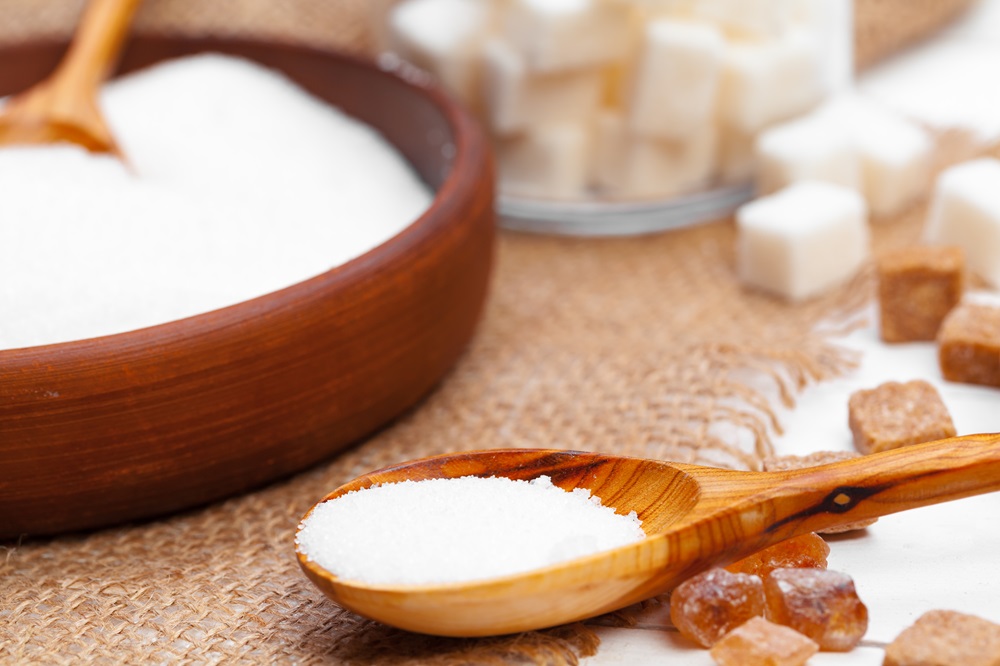Maltitol – what is it? Is it safe? Read on!

Maltitol is a sugar substitute classified as a polyol. This sweetening agent has been used in the food industry for years and is considered a natural, low-calorie alternative to sugar. It’s commonly added to chewing gums, sugar-free cookies, and reduced-fat food products.
Maltitol sweetener - what exactly is it? What is maltitol made from? Does it raise blood sugar levels? Are there any side effects? Is it safe?
Table of contents
What is maltitol?
Maltitol (E965) is an organic compound from the polyol family - sugar alcohols. It’s a disaccharide formed from glucose and sorbitol. This sweetener is derived from natural sources, most often obtained from maltose, which in turn comes from starches such as wheat, corn, or tapioca.
The process of producing maltitol involves hydrogenating maltose extracted from starch. This is done under high temperatures (about 100 - 150°C) and pressure (100 - 150 bar), using catalysts like molybdenum, palladium, or nickel to accelerate the reaction.
Maltitol appears as a white, odorless powder with excellent solubility in water. First synthesized in 1941, it has become a staple in food production. It’s used in chewing gum, ice cream, and candy, as well as in reduced-sugar jams, jellies, sauces, baked goods, and desserts.
Maltitol as a sweetener
Maltitol is heat-stable, making it an effective sugar replacement in cooking and baking. It also provides fewer calories than sucrose. Studies show that maltitol delivers about 240 kcal per 100 g, while regular table sugar contains approximately 400 kcal per 100 g. Additionally, its sweetness is comparable to that of sucrose - roughly 90% as sweet - and it has a lower glycemic index than traditional sugar.
This sweetener is commonly used in the production of low-fat, reduced-sugar products such as sugar-free cookies, protein bars, and low-calorie treats. It also works as a fat substitute, helping to create a creamy texture in items like fruit yogurts and dairy-based desserts.
Is maltitol healthy?
Maltitol doesn’t leave a bitter or off taste after consumption. It also lacks the cooling sensation that often follows other sugar alcohols. Importantly, it doesn’t caramelize or react with amino acids during heat processing, which helps avoid Maillard reactions and limits browning in foods.
With a low glycemic index, maltitol doesn't cause sharp spikes in blood sugar. It is considered a safe ingredient with no known toxic effects, making it suitable for diabetics, those with gluten intolerance, and people avoiding lactose.
Research shows that maltitol isn't metabolized by bacteria in the human mouth, so it doesn’t contribute to tooth decay. Thanks to its lower caloric value, it may help with weight management and reduce the risk of obesity. It’s also considered non-genotoxic and may have mild prebiotic effects, promoting the growth of beneficial gut bacteria like bifidobacteria.
Still, excessive intake can lead to digestive discomfort. To avoid side effects, maltitol should be consumed in moderate amounts.
Maltitol and diabetes
Compared to traditional sugar, maltitol has a much lower glycemic index. Its metabolism in the body also differs from that of sucrose. Because it is absorbed more slowly, maltitol can reduce blood glucose levels and blunt insulin response after meals.
Studies suggest maltitol may help lower post-meal glucose and insulin spikes when compared to equal amounts of glucose or sucrose. It may also aid in the digestion of carbohydrates and help regulate postprandial hyperglycemia by slowing glucose absorption in the intestines and increasing glucose uptake in muscles. However, while it has a lower GI, it still affects blood sugar, so diabetics should consume it in limited amounts.
Maltitol during pregnancy - is it safe?
Maltitol is generally considered safe for use during pregnancy when consumed in reasonable quantities. Scientific data show that moderate intake poses no teratogenic risk.
However, excessive intake - about 4 g per kg of body weight - may have embryotoxic effects, including reduced fetal weight and delayed growth. While maltitol doesn’t damage the fetus, it should not be consumed in large amounts during pregnancy.
Maltitol - safety and side effects
The U.S. Food and Drug Administration (FDA) classifies maltitol as GRAS (Generally Recognized As Safe), making it approved for use as a sweetener in food.
However, typical recommendations suggest not exceeding 0.3 - 0.8 g per kg of body weight daily. High doses may cause gastrointestinal symptoms such as bloating, diarrhea, abdominal pain, and general digestive discomfort. It can also have a laxative effect.
Even in smaller amounts, maltitol may cause issues for individuals with sensitive digestion, especially those with SIBO (Small Intestinal Bacterial Overgrowth). For this reason, people following a low-FODMAP diet are advised to avoid polyols, including maltitol.
Maltitol for children
Maltitol appears to be well-tolerated in children and can be safely included in their diets.
Still, as with adults, moderation is key. Excess consumption may cause stomach aches or act as a laxative. For children, daily intake should not exceed 15 g.
Maltitols - summary
Maltitol is a sweetener that provides about half the calories of sucrose, making it popular in diet foods and products for diabetics.
As a sugar alcohol derived from natural sources, it’s recognized as safe and suitable for pregnant women and children alike. However, while it offers several health benefits, maltitol should be used in moderation, as excessive intake can lead to bloating, abdominal discomfort, and a laxative effect.

